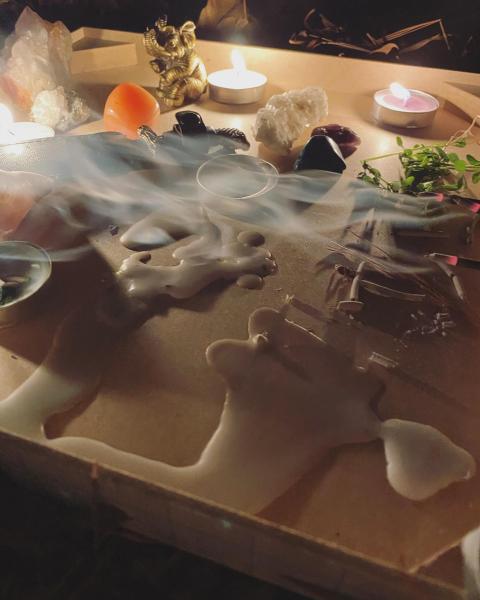Whether it was a curse or coincidence, when a double murder happened in 1904 at the Cripe homestead, just three miles south of Rochester, the house was soon deemed as cursed by the community. Just one month after the tragedy, the home was quickly demolished, ending the 50 year reign of bad luck and tragedy that was said to be cast on the property.
On December 6, 1904, it was reported that jealousy and alcohol abuse led to the murder of 35-year-old bachelor Joe Cripe, and 28-year-old Lucinda Sprowl Burns. The Rochester Sentinel reported that prior to the crime, Mrs. Burns had recently left her husband Gilly Burns, and had been working at the Cripe home as a way to earn a living. The wife and mother of four had clearly been struggling financially since the separation. At the time, Mrs. Burns had recently sent two of her children to the Work Orphans Home in Plymouth, while the youngest two remained with her at home.
It was reported that Mrs. Burns, her eighteen month old baby, Cripe, and his aged mother, 75-year-old Martha Braman, had been sitting at the dinner table just before 6 p.m. when the attack began. Shooting through the kitchen window, Mr. Burns aimed his first shot at his wife, before taking out Cripe. Both victims had been shot in the head and died immediately.
Neighbors reported that Mr. Burns had been known for his fine marksmanship, being a champion wing shot since boyhood, and seldom missed anything that was within range of his gun.
Although not a direct target, a stray bullet had also hit the elderly Braman over her eye, causing a non-fatal wound. Several of Braman's teeth were also reported to have been knocked out. By the time the elderly woman ran for help, the perpetrator was gone.
Mr. Burns immediately ran to the home of his sister, Mrs. Sarah Werner, three miles west of the crime scene, and committed suicide in her front yard. It was reported that when Mr. Burns was found by his family, who went outside after hearing the bang of the shotgun,
he was lying straightened out, the murderous gun laying across his chest where it had fallen with him.
All three of the bodies were soon taken to Rochester in the 'Zimmerman dead wagon,' where they were prepared for proper burial.
Leading up to the murders, it had been reported that Burns had threatened to kill his wife. The suicide was accepted as conclusive evidence of his guilt for the crime. At that time, the public opinion had been that there was no reason for Burns to murder Cripe, and it was widely believed that Mrs. Burns and Cripe did not hold any intimate relations. Mrs. Burns had been merely working at the Cripe home as a 'hired girl' to support herself and her two small children. It was believed that Burns had become desperate after failing to reclaim his wife. It was said that wild, drunken accusations had led to the murders.
The Cripe homestead had formerly been given to Miss Braman for, what was supposed to be, the rest of her life. By 1904, Braman was reported to have been quite feeble, however, and the murder of her son, her sole caretaker, resulted in her being sent to the County Poor Farm.
Soon after the Burns rampage, rumors of the Cripe homestead being hoodooed for more than fifty years prior to the murders began to spread. Settlers from the Rochester area vowed that the Cripe property had even been known for having goblins and witches during the last half of the 19th century.
The story became so popular that it even spread outside of the Fulton County community. The Indianapolis Sunday Sentinel had featured a page write-up of the Cripe home south of Rochester, which elaborately told readers of the 'cursed farm' and tragic incidents that occured on the property.
According to the stories of the old settlers of Rochester, there had been, previous to the Burns tragedy, a suicide, several cases of insanity, and a suspicious death which was never officially proven to be a murder.
The suicide was by Mrs. Abraham CRIPE, the grandmother of Joe Cripe, which occured sometime in the late 1850's. It was told that Mrs.Cripe had saturated her bed coverings with coal oil, before cutting her throat with a butcher knife and getting on the bed as it was on fire. At the time of the rash act, her twelve year old son had been home and dragged his mother outside to extinguish the flames. Mrs. Cripe, however, had been intent on suicide. She then went into the barn, where she stood in the doorway to see if anyone was coming, as she set the structure on fire and burned to death. Her bones were later found in the ashes.
Disturbed over the death of his mother, the twelve year old son was rumored to have gone insane. His mental illness was reported to have caused mania for tobacco. At 26-years-old he would end up dying at the Cripe property by choking on a large wad of tobacco down his throat.
In the mid 1880's, Elias Cripe, the father of Joe Cripe, had also been found in a suspicious manner, unconscious and injured in the barn at the Cripe homestead. Many locals believed that the death was found to be under foul play. Additionally, Clark Cripe, brother of Joe Cripe, had been an insane patient at Longcliff Hospital in Logansport.
The rumors were taken seriously after the Burns tragedy at the Cripe homestead, and within weeks the old house was torn down. The 'old Cripe house of many tragedies,' so often referred to by the Rochester community, was made into a cornfield by the spring of 1905.
More on the crime can be found in shocking detail thanks to the book published by the late Wendell C. Tombaugh's 1905-1907 obit collection, which consists of stories and obits published in the Rochester Sentinel.
It can also be found online at http://genealogy.fulco.lib.in.us/Tombaugh/Obits-Biogs_1905-1907.htm









